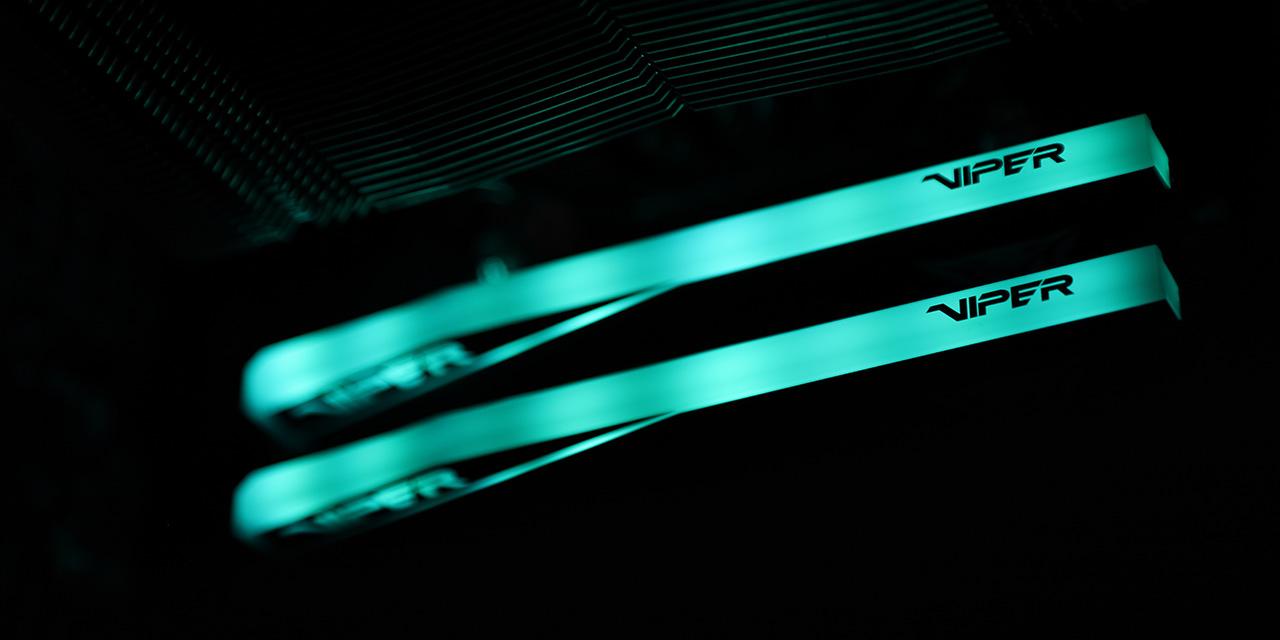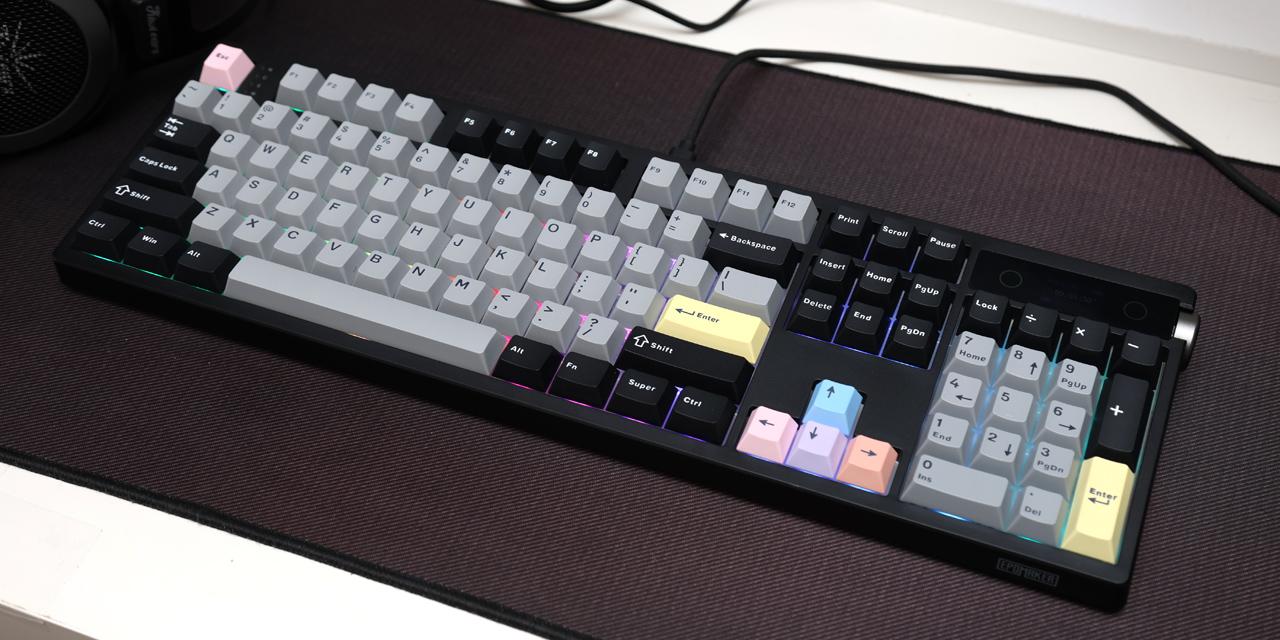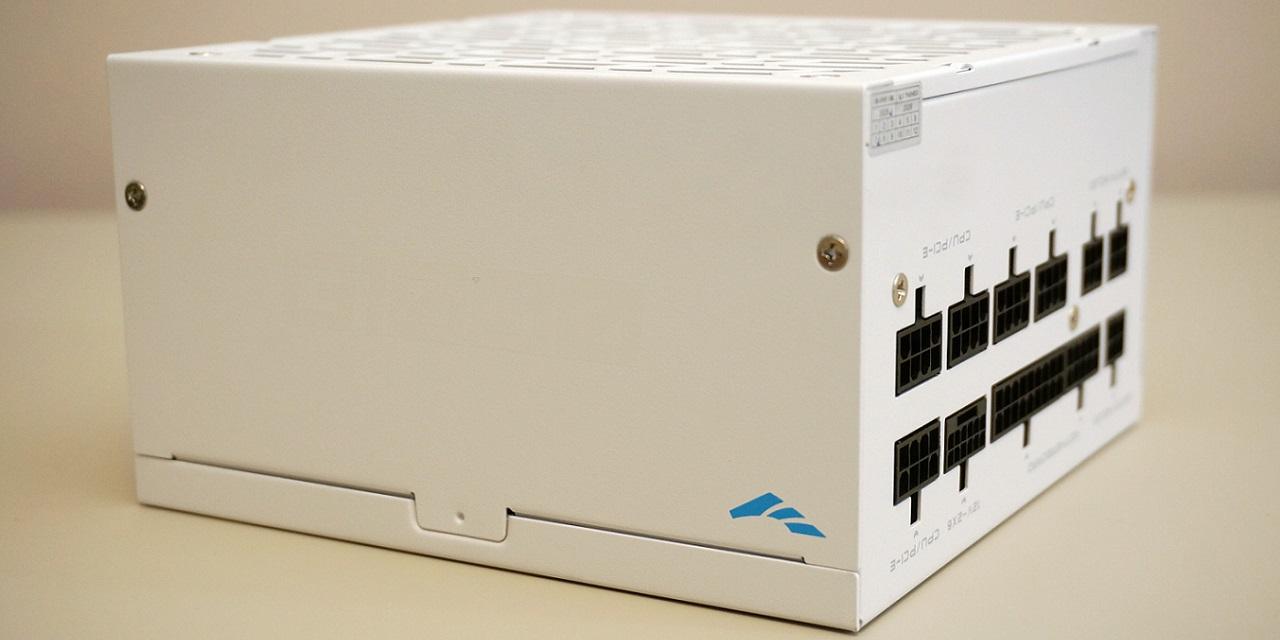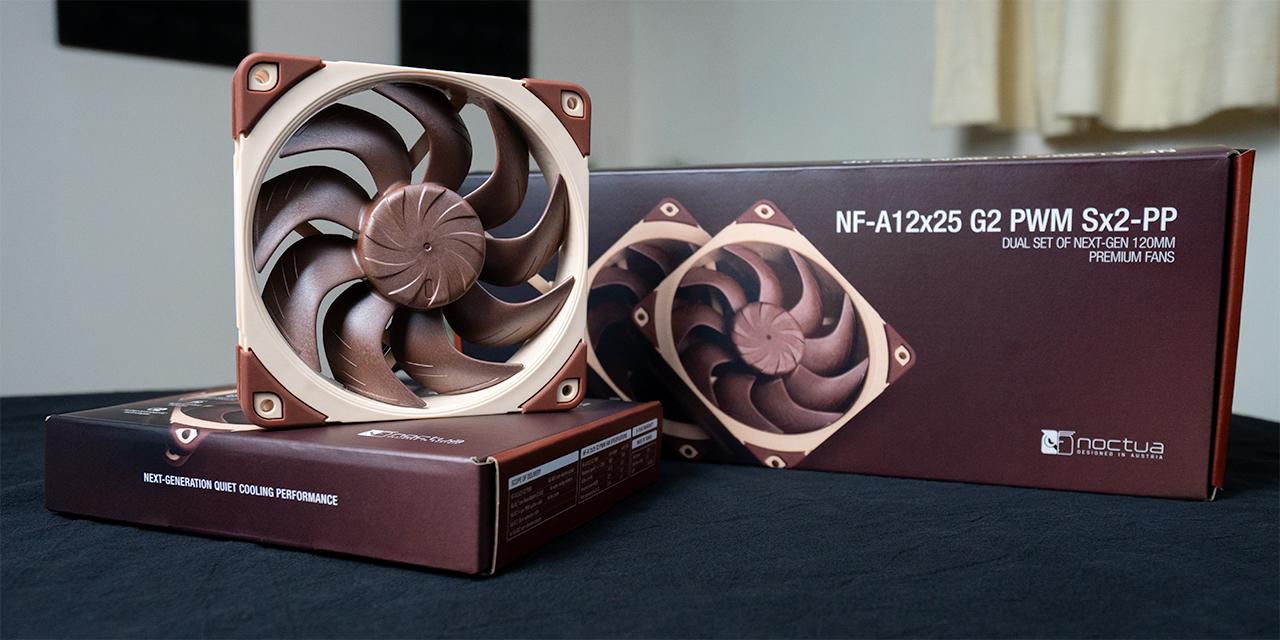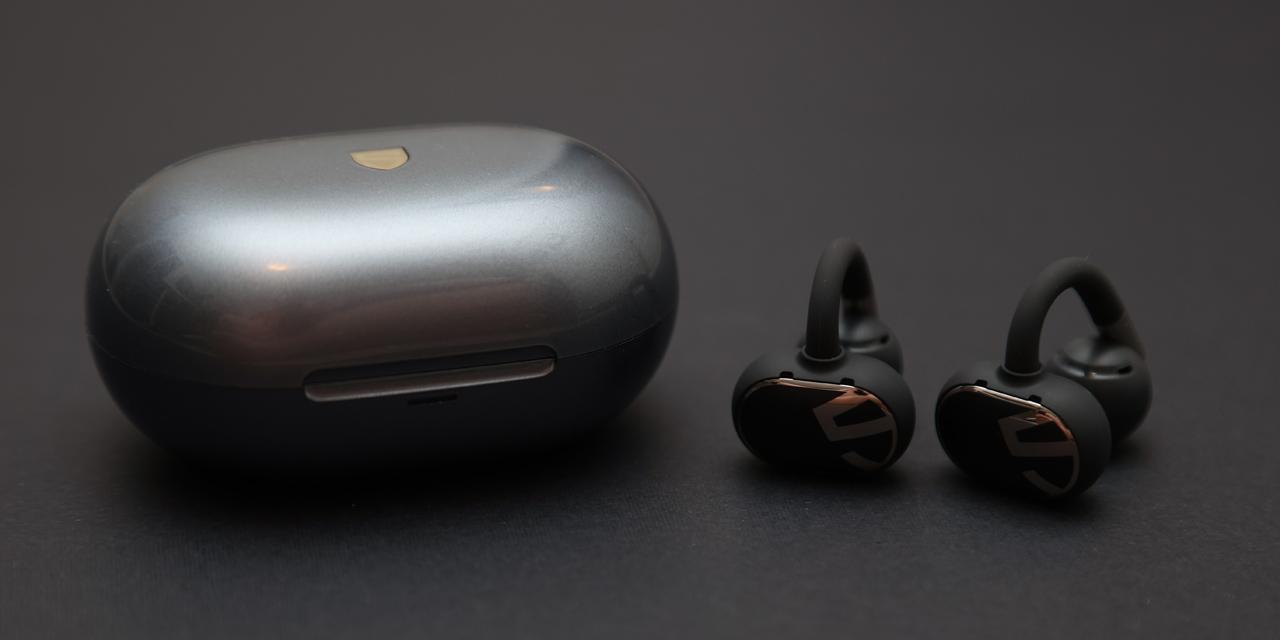Page 2 - A Closer Look - Hardware and Software

The Cooler Master SickleFlow Edge 360 ARGB White Edition combines three SickleFlow Edge 120 fans to form a single unit. It can be had in white or black. The frame of the SickleFlow Edge 360 is a sturdy, opaque, white plastic with minimal flex and a sleek design. The frame houses all three fans in a row, measuring 361mm long, 122mm wide, and 26.5mm tall. It is a convenient package for those who need to install three 120mm fans in a row. The long edge of the frame has a silver-chromed Cooler Master logo on the center on each side. Both short edges of the frame have a proprietary 8-pin connector. On the front or intake side, two triangular cutouts with RGB LED lights in between each fan to provide some flair and help to reduce weight. This is part of Cooler Master’s “hollow frame structure”. Eight silicone pads run along the edges where the unit would contact a computer case when installed. The four corners of the unit have an oblong mounting hole for screws. Each hole is surrounded by a silicone pad to reduce noise and vibrations. Each fan has an octagonal opening that tapers into a circle for the circular shape. The blades are made of translucent white plastic. Each one houses multiple addressable RGB LEDs that are sufficient to illuminate the whole blade in a plethora of colors. The center of each impeller has a white sticker with the Cooler Master logo in gray.
Internally, the SickleFlow Edge 360 ARGB White Edition feature Cooler Master’s loop dynamic bearing. This appears to be an in-house form of the fluid dynamic bearing, which cycles an internally contained oil for lubrication, resulting in lower operating noise and reduced wear. Cooler Master claims their proprietary design prevents dust ingress and oil leakage, which in return helps with ensuring a longer operating lifespan. MTTF is rated as over 160,000 hours, which equates to a little over eighteen years, while Cooler Master offers a 5-year warranty for this product.

The SickleFlow Edge fan is made up of seven blades. Each tip tapers further and thinner than most blade designs. They have a regular shape with a wider outer edge and narrower attachment point. The fins are smooth with a lightly textured finish because of an etched plastic injection mold. Each blade starts at an approximate 30-degree angle, curving down to a 45-degree angle at the center where it is mounted. They do not overlap with each other. The shape of the fan vaguely looks like seven sickles carving through the air, thus the name SickleFlow.

The backside of each fan is mounted onto a narrow four-armed structure. This provides maximal air flow and minimal obstruction. One of the arms houses the wires, which extend into the internals of the frame. Caution should be taken when the fan is in operation, as neither the intake nor exhaust sides of the fan have a grille. In the center of the support structure is a white, plastic circular sticker with a silver-gray Cooler Master logo, which covers the internal components. As this is a three-fan unit, there are three of these stickers, but each one is slightly misaligned with one another. This issue may be an eyesore to some. Like the front, the same triangular cutouts and LED lights are located in between the fans and corner mounting holes.

Regarding sound, airflow, and static pressure, the following insights have been borrowed from my colleague Jonathan Kwan's review of the Noctua NF-F12 PWM and NF-P12 PWM fans. Noise and CFM, or cubic feet per minute, are closely related challenges when designing fans, as designers intend to achieve the best airflow-to-noise ratio. One would want the best amount of airflow while keeping it as quiet as possible. Even with the best ratio, it is quite difficult to always measure objectively. The most common unit of objective measurement is CFM for airflow and dB for noise. We will go over how application and CFM is related with regards to its standard measurements, but let us discuss the perceived noise first.
dB, or Decibels, is a logarithmic unit of sound intensity. While it provides an objective measurement, it should be noted that perceived noise levels to the human ear and actual sound intensity could result in different perceptions. Human ears are more sensitive to specific frequencies, and when those frequencies are emitted from their source, it may appear louder than its numerical value suggests. The same can be said vice versa -- the frequencies that human ears are less sensitive can have higher dB measurements from a sound meter, yet the human ears do not perceive it to be as loud as the numbers suggest. Other factors such as turbulence noise are often not measured correctly, therefore, while it usually provides a good reference, it does not necessarily reflect real life performance all the time. As such, a scaled unit of dBA, or decibels A-weighted, is used to measure sound scaled to the human hearing threshold.
With considering the application and CFM of a fan, it is generally optimal to prioritize a high air volume flow rate. However, pure CFM values have limitations in indicating fan performance. It is not solely about how much air in can move per minute quantitatively, but equally important is how effectively it performs in real-world scenarios. The airflow-to-noise ratio plays a crucial role, as mentioned earlier. Additionally, static pressure is a key consideration depending on the application. High-resistance scenarios, such as dense fins on a large heatsink, require high static pressure, whereas case fans need less static pressure and faster airflow. There are instances where case fans may also benefit from higher static pressure, such as the front intake fans behind a mesh grille. Some fans are simply designed for different purposes, so choose one appropriate for your needs.
Looking at the technical specifications of the Cooler Master SickleFlow Edge 360, its fan spins between 690 to 2500 RPM. At maximum speed, it is rated to push 190CFM of air, 3.54mmH2O of static pressure, at 38.5 dBA of noise. The airflow and noise ratings appear to account for all three fans when comparing to the specs of the SickleFlow Edge 120 ARGB version. Dividing the total airflow by three gives a rating of 63.3CFM per fan. Given these numbers, the SickleFlow Edge 360 unit has a good balance between air flow and static pressure with the noise levels attributed to the higher fan speeds. It should serve well as a case fan even with filters or for a 360mm radiator.

The SickleFlow Edge 360 simplifies the wiring process for cable management significantly. Rather than needing six cables for three fans, an 8-pin proprietary connector located at the ends of the unit is used to supply power to both the fans and the integrated addressable RGB LED lighting. Cooler Master supplies a single premium feeling, white colored braided cable that helps to reduce cable clutter. This 8-pin cable plugs into the fan unit and splits into the PWM fan header and a 5V 3-pin ARGB header. The ARGB header further splits for daisy chaining more addressable LEDs. A motherboard that supports 3-pin ARGB headers can directly control the fan’s LEDs. Otherwise, an LED Controller A1 Mini is included to connect to an internal USB 2.0 motherboard header. This controller is used in conjunction with Cooler Master’s MasterCTRL software to alter the fan lighting effects.
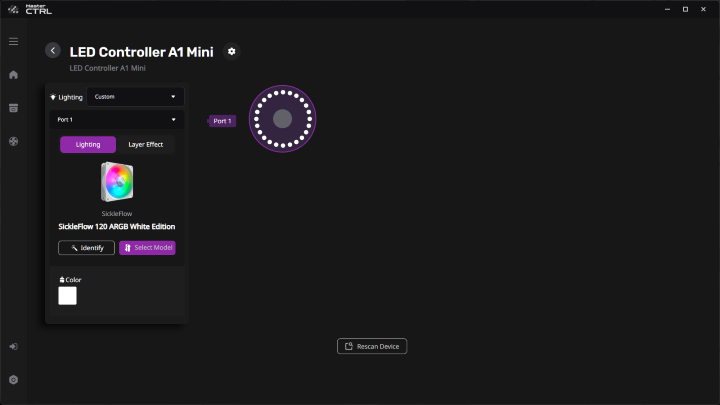
The MasterCTRL software is simple to use and immediately detected the included controller. This software can be found on Cooler Master's website. By selecting the fan unit under the device tab, the lighting effects can be changed. The software includes multiple effect presets, and options to adjust the LED brightness and effect speeds. By selecting the controller, deeper customization is available to adjust up to twenty-four individual color inputs.
Page Index
1. Introduction, Packaging, Specifications
2. A Closer Look - Hardware and Software
3. Performance Tests
4. Conclusion
